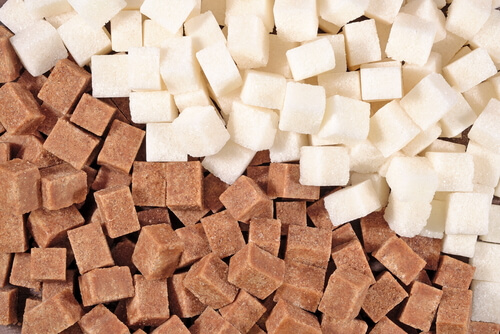Many health-conscious buyers wonder if beet sugar vs cane sugar makes a difference in nutrition.
Many health-conscious buyers wonder if beet sugar vs cane sugar makes a difference in nutrition.
Blog Article
Discover the Uses and Advantages of Beet Sugar Vs Cane Sugar in Your Daily Diet Plan
Checking out the distinct top qualities of beet and cane sugar reveals greater than just their sweetening capacities; it highlights their unique influences on health and cooking arts. Beet sugar, understood for its subtle taste, is frequently favored in fragile desserts, whereas cane sugar, with its hint of molasses, includes splendor to durable meals. Each kind holds its very own dietary profile and glycemic implications, inviting a deeper understanding of their duties in a well balanced diet regimen and lasting intake practices.
Origin and Manufacturing Processes of Beet and Cane Sugar

The distinctive environments and dirt kinds needed for growing sugar beets and sugarcane add to distinctions in their cultivation techniques and geographic distribution, affecting the economics and sustainability of their production. beet sugar vs cane sugar.
Nutritional Comparison In Between Beet Sugar and Cane Sugar
In spite of originating from different plants, beet sugar and cane sugar are nutritionally extremely similar, both largely including sucrose. Each offers about 4 calories per gram, converting to roughly 16 calories per teaspoon. Structurally, both sugars are composed of approximately 99.95% sucrose, with minimal amounts of other compounds like wetness and trace minerals, which do not significantly modify their dietary accounts.

Ultimately, when picking in between beet sugar and cane sugar based on nutritional content alone, both deal similar benefits and disadvantages as they are basically kinds of the exact same particle-- sucrose, offering fast power without other nutrients.
Effect On Health: Glycemic Index and Caloric Material
Exploring additionally into the results of beet sugar and cane sugar on wellness, it is very important to consider their glycemic index and calorie material. Both sugars are classified as sucrose, which includes sugar and fructose. This make-up web leads them to have a comparable influence on blood sugar level levels. The glycemic index (GI) of both beet and cane sugar is around 65, classifying them as high-GI foods, which can create fast spikes in blood sugar levels. This is a vital aspect for people taking care of diabetes or those attempting to maintain their energy degrees throughout the day.
Each kind of sugar consists of about 4 calories per gram, making their calorie content matching. For those keeping an eye on calorie intake, especially when handling weight or metabolic health conditions, recognizing this equivalence is important (beet sugar vs cane sugar). Extreme usage of any high-calorie, high-GI food can add to health concerns such as excessive weight, heart illness, and insulin resistance.
Environmental and Economic Considerations of Sugar Manufacturing
Beyond wellness impacts, the manufacturing of beet and cane sugar likewise elevates significant ecological and economic issues. Sugar beet cultivation has a tendency to require cooler climates and has a lower geographical impact contrasted to sugar cane, which flourishes in tropical regions.
Furthermore, using pesticides and fertilizers in both beet and cane sugar growing can result in soil destruction and contamination, more affecting biodiversity and regional water bodies (beet sugar vs cane sugar). The option in between cultivating sugar beet or cane typically pivots on neighborhood ecological problems and financial factors, making the sustainability of sugar manufacturing a complicated concern
Culinary Applications and Taste Distinctions
While the ecological and economic aspects of sugar production are without a doubt substantial, the selection between beet and cane sugar also influences click to investigate culinary applications and taste accounts. Beet sugar, stemmed from the sugar beet plant, is understood for its incredibly neutral taste. This makes it a flexible active ingredient in cooking, where it does not change the taste of other parts. It liquifies promptly and is optimal for usage in cakes, cookies, and pastries.
Walking cane sugar, drawn out from sugarcane, typically maintains molasses traces, which give a distinctive richness and depth. This small molasses flavor improves the intricacy of baked goods, sauces, and sauces. It is learn this here now especially preferred in items where a caramel touch is desired, such as in brownies or gingerbread. In addition, the small variation in moisture content between beet and cane sugar can affect the structure and uniformity of dishes, making cane sugar a favored option for certain recipes that gain from its special residential properties.

Final Thought
To conclude, both beet and cane sugar have unique beginnings and manufacturing processes, offering similar dietary profiles with slight differences in sodium content and flavor. While their influence on health, particularly concerning glycemic index and calories, is similar, the option in between them often comes down to environmental, economic aspects, and certain culinary requirements. Comprehending these elements can direct consumers in making informed decisions that align with their wellness objectives and flavor preferences.
Report this page